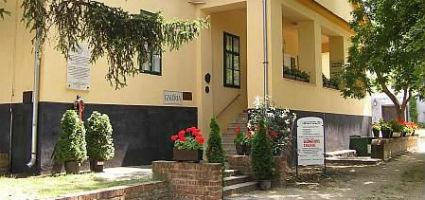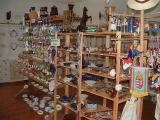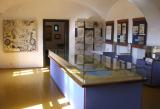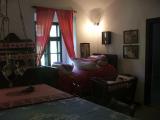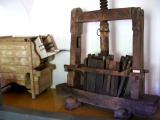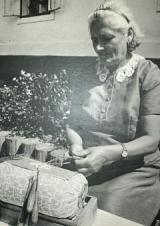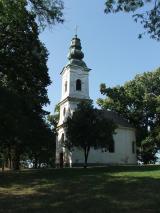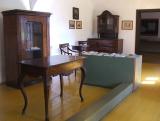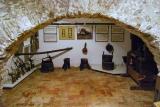
Not one of the agricultural heritages of the Romans remained as intact as viniculture. The barbarians were not interested in anything more, did not show more tolerance than to producing sweet grape and excellent wine. The middle part of the Kőhegyi Hills near Zamárdi was owned by the Tihany Abbey while the eastern and western slopes were shared by serfs.
Until the vineyards were taken over by the abbey, it belonged to Szántódpuszta. The wine extracted in the 'L' shaped presses was then ripened in the 'T' shaped cellars. Unfortunately, we can only show now the coat of arms of the abbey as the building itself was taken down.
The exhibition reviews manorial and peasant viniculture at the turn of the 19th century by showing tools, typical grapes and types of cellars with their setting.

